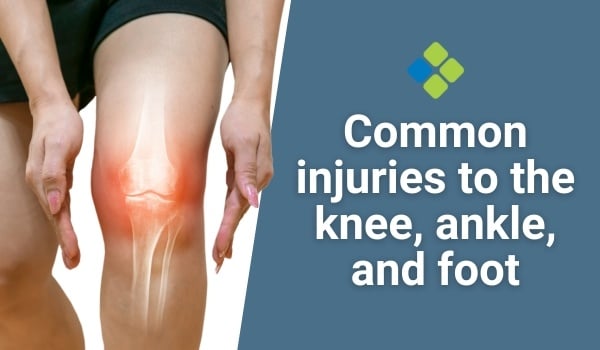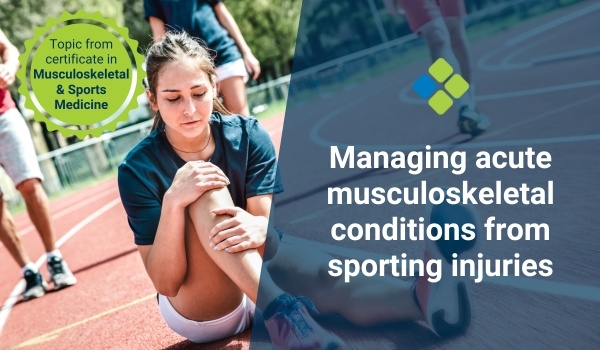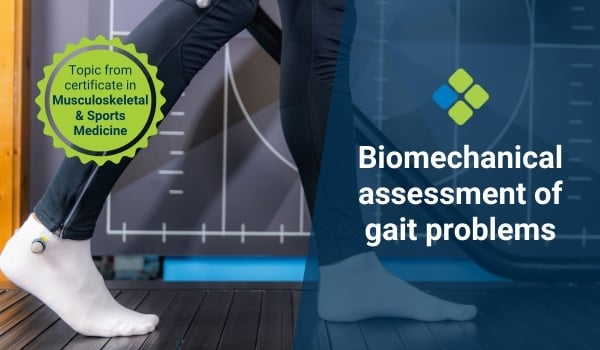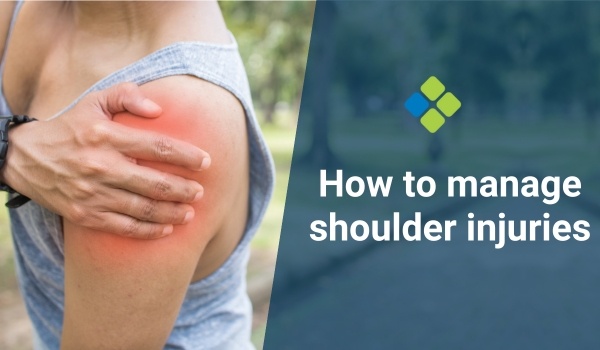Common injuries to the knee, ankle, and foot
Read about the diagnosis and management of knee, ankle, and foot injuries to reduce risk of complications and to promote long-term musculoskeletal health.

HealthCert Education
Athletes, fitness enthusiasts, and patients who engage in regular physical activity can be prone to injury. These injuries can range from minor muscle strains to severe ligament tears or bone fractures, and can negatively impact performance and overall health. Let's look at some of the most common injuries to the knee, ankle, and foot.
Sports injuries typically result from either repetitive stress (chronic injuries) or sudden trauma (acute injuries) to the bones, muscles, and joints. Common causes include inadequate warm-up, poor technique, overtraining, and accidents like falls or collisions.
Knee injuries
Ligament injuries
The knee contains four main ligaments:
-
Lateral Collateral Ligament (LCL)
-
Medial Collateral Ligament (MCL)
-
Anterior Cruciate Ligament (ACL)
-
Posterior Cruciate Ligament (PCL)
Among these, the ACL and PCL are most commonly injured, especially in athletes and weightlifters. Tears often occur from knee twisting, sudden pivots, landing on one foot, or direct trauma. Symptoms include limited range of motion, difficulty bearing weight, knee tenderness, and pain during walking.
Meniscal injuries
Meniscal tears are usually caused by a sudden twist or direct trauma. The menisci are crescent-shaped cartilage pads that act as shock absorbers. These injuries often occur along with ligament damage. Symptoms include localised knee pain, locking of the joint, difficulty bending or straightening the knee, swelling that appears later, and increased pain with movement.
Patellar tendinopathy (Jumper's Knee)
This is an overuse injury involving inflammation of the patellar tendon, commonly seen in sports that involve jumping or forceful landings (e.g. basketball, volleyball, pickleball). It may also occur after a sudden increase in activity. Symptoms include front knee pain that worsens with activity.
Ankle injuries
Ankle sprain
This is a common injury caused by overstretching or tearing the ligaments supporting the ankle. It typically occurs when the foot rolls inward (inversion injury) during sports or running on uneven surfaces. Sports like basketball and soccer frequently cause these injuries. Symptoms include swelling, bruising, and difficulty walking.
Achilles tendinitis
This is inflammation of the Achilles tendon, which connects the calf muscles to the heel. It’s a common overuse injury in runners and athletes involved in repetitive jumping or running. Pain usually appears in the back of the lower leg and worsens with activity.
Plantar fasciitis
Plantar fasciitis is inflammation of the plantar fascia, the thick tissue running along the sole of the foot, supporting the arch. Excessive strain from high-impact activities or poor footwear can lead to microtears, causing heel pain — especially in the morning or after prolonged standing.
Foot injuries
Stress fracture
These are tiny cracks in the bones of the foot or ankle, typically caused by repetitive impact or overuse. Athletes who run long distances or on hard surfaces are especially at risk. Pain tends to worsen with activity and improve with rest.
Turf toe
This is a sprain of the ligament at the base of the big toe, caused by excessive upward bending or impact. It’s common in athletes playing on artificial turf (hence the name), especially in football, soccer, or baseball.
Heel spur
Heel spurs are abnormal bony growths at the base of the heel, usually from long-term stress and calcium buildup. Athletes with flat or high arches, or those running on hard surfaces with poor footwear, are particularly susceptible.
Managing sports injuries
For acute injuries within the first 48–72 hours, patients should follow the R.I.C.E. protocol: Rest, Ice, Compression, and Elevation.
Physiotherapy is essential at every stage — whether the injury is acute, chronic, or after surgery. Referral to a physiotherapist may be necessary for the development of a personalised rehab plan based on the type and location of the injury.
Most patients should start seeing improvement within six weeks of consistent treatment.
Surgery may be necessary for complete ligament tears, meniscal damage, Achilles tendon ruptures, or bone fractures, followed by a structured post-operative physiotherapy program.
Injuries to the knee, ankle, and foot are common among both active and sedentary individuals. Ignoring symptoms and relying on over-the-counter pain medications may provide temporary relief but can lead to chronic, irreversible damage. Delayed treatment increases the risk of requiring surgery and may result in complications like septic arthritis or post-traumatic arthritis. Early diagnosis and proper management are crucial for long-term joint health and mobility.
- Dr Humda, Physiotherapist
Learn more about this topic in the HealthCert Professional Diploma program in Musculoskeletal & Sports Medicine - fully online or with optional practical workshops.
How to claim CPD hours:
 Engaging with this blog can help meet your annual Education Activities CPD requirement! If you consume educational webinars, podcasts, articles, or research on this blog, you can Quick Log CPD hours with the RACGP via the usual self-submission process. You will be asked to reflect on what you have learned, and you will require supporting evidence such as a screenshot.
Engaging with this blog can help meet your annual Education Activities CPD requirement! If you consume educational webinars, podcasts, articles, or research on this blog, you can Quick Log CPD hours with the RACGP via the usual self-submission process. You will be asked to reflect on what you have learned, and you will require supporting evidence such as a screenshot.
Download the RACGP’s guide to self-recording your CPD here.

 1800 867 1390
1800 867 1390






